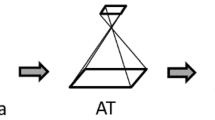Abstract
The geocontrol template method was developed to georeference multiple, overlapping analog aerial photographs without reliance upon conventionally obtained horizontal ground control. The method was tested as part of a long-term wetland habitat restoration project at a Lake Erie coastal wetland complex in the U.S. Fish and Wildlife Service Ottawa National Wildlife Refuge. As in most coastal wetlands, annually identifiable ground-control features required to georeference photo-interpreted data are difficult to find. The geocontrol template method relies on the following four components: (a) an uncontrolled aerial photo mosaic of the study area, (b) global positioning system (GPS) derived horizontal coordinates of each photo’s principal point, (c) a geocontrol template created by the transfer of fiducial markings and calculated principal points to clear acetate from individual photographs arranged in a mosaic, and (d) the root-mean-square-error testing of the system to ensure an acceptable level of planimetric accuracy. Once created for a study area, the geocontrol template can be registered in geographic information system (GIS) software to facilitate interpretation of multiple images without individual image registration. The geocontrol template enables precise georeferencing of single images within larger blocks of photographs using a repeatable and consistent method.



Similar content being viewed by others
References
American Society for Photogrammetry & Remote Sensing (1989) ASPRS interim accuracy standards for large-scale maps. Photogrammetric Engineering & Remote Sensing 55:1038–1040
Avery TE, Berlin GL (1992) Fundamentals of remote sensing and airphoto interpretation, 5th edn. Macmillion, New York
Boggs K, Shepard M (1999) Response of marine deltaic surfaces to major earthquake uplifts in southcentral Alaska. Wetlands 19:13–27
ESRI (2007) Registering the paper map. URL: http://webhelp.esri.com/arcgisdesktop/9.2/index.cfm?id=552&pid=549&topicname=Registering_the_paper_map (Accessed January, 2009)
Hefner JM, Moorhead KK (1991) Mapping pocosins and associated wetlands in North Carolina. Wetlands 11:377–389
Hu S, Gabriel AO, Bodensteiner LR (2003) Inventory and characterization of wetland habitat on the Winnebago Upper Pool Lakes, Wisconsin, USA: an integrated multimedia-GIS approach. Wetlands 23:82–94
Kowalski KP, Wilcox DA (1999) Use of historical and geospatial data to guide the restoration of a Lake Erie coastal marsh. Wetlands 19:858–868
Miyamota M, Yoshino K, Nagano T, Ishida T, Sato Y (2004) Use of balloon aerial photography for classification of Kushiro wetland vegetation, northeastern Japan. Wetlands 24:701–710
Northcutt, A (2003) Leica RC30 aerial film camera. Atlanta, Georgia. Leica Geosystems. (PDF downloaded July, 2007)
Shay JM, de Geus PMJ, Kapinga MRM (1999) Changes in shoreline vegetation over a 50-year period in the Delta Marsh, Manitoba in response to water levels. Wetlands 19:413–425
Sun H (2006) Introduction to GPS/IMU integration. Photogrammetric Engineering & Remote Sensing 72:90–91
U.S. Army Corp of Engineers (2002) Engineering and design, Photogrammetric mapping. Department of the Army, U.S. Army Corp of Engineers Manual No. 1110-1-1000
Acknowledgments
We thank Greg Lemke at Air-Land Surveys for technical assistance regarding data acquisition and BioOne for a free 30 day on-line access to Wetlands by JLG for research purposes. We also thank Curt Mark, Katharine McDevitt, and Kirsta Grapentine for early stage manuscript review; Dr. Douglas Wilcox, Mr. Greg Kennedy, and the anonymous peer reviewers for their constructive comments on the completed manuscript. This article is Contribution 1544 of the USGS Great Lakes Science Center.
Author information
Authors and Affiliations
Corresponding author
Rights and permissions
About this article
Cite this article
Grapentine, J.L., Kowalski, K.P. Georeferencing Large-Scale Aerial Photographs of a Great Lakes Coastal Wetland: a Modified Photogrammetric Method. Wetlands 30, 369–374 (2010). https://doi.org/10.1007/s13157-010-0027-9
Received:
Accepted:
Published:
Issue Date:
DOI: https://doi.org/10.1007/s13157-010-0027-9




